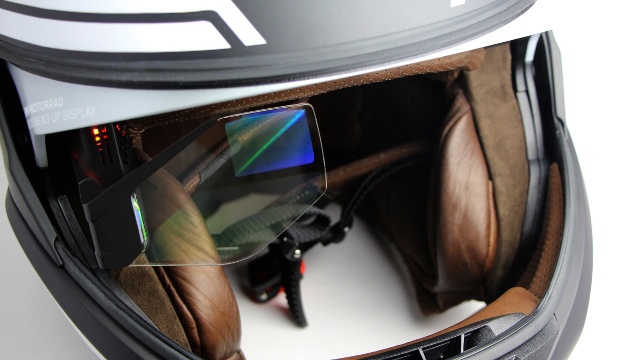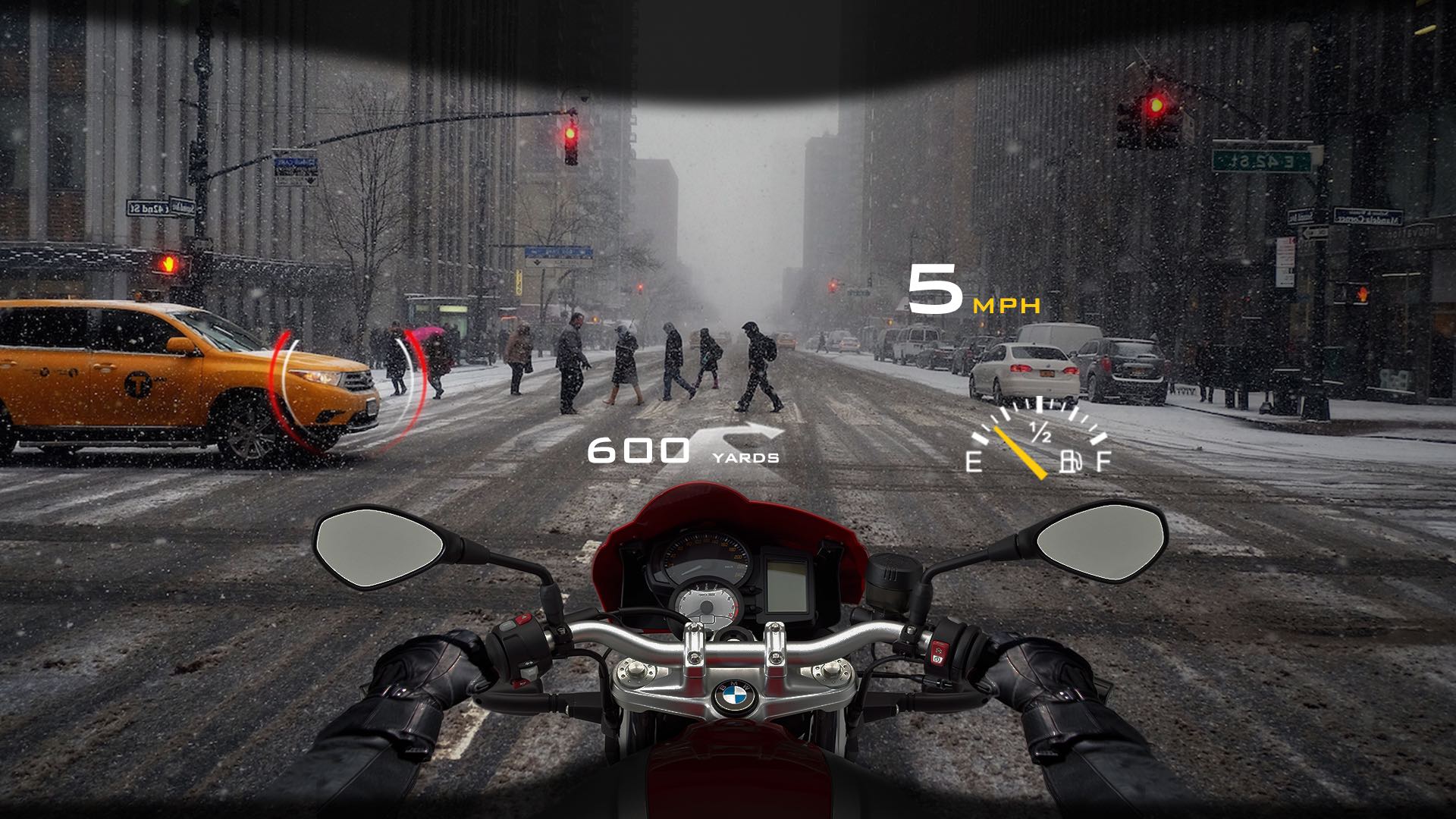New motorcycle Head-up Display (HUD) technology has just been introduced at CES that may indeed begin to change the perception of the utility of such devices. Driving this is new waveguide display technology from DigiLens that was debuted in a motorcycle helmet from BMW.

BMW plans to commercialize the wide field of view device in about a year. The design is more like the HUDs in automobiles than the current crop of motorcycle HUDs, which is why the introduction is likely to get close scrutiny by the industry – and maybe change some minds on the utility of a HUD in a motorcycle.
Prior to CES, we took the opportunity to talk to motorcycle helmet makers about their perception of HUDs and found a lot of skepticism. For example, Jullian Preston-Powers, CEO of UK-based Halo Active Technologies, is not a believer in the current crop of motorcycle HUDs perhaps best personified by the Skully helmet. The HUD in this device is a rather bulky eyepiece that sits near the chin guard so riders need to glance down to see it. It is not a see-through type, has a narrow field of view, short focal length and small eyebox.
“Talking on the phone is enough of a distraction to be dangerous, let alone a bunch of icons you have to refocus on,” commented Preston-Powers. “The display of rear-view video in the HUD is even worse. All of these things take your eyes off the road and require an optical and mental refocus on the information. This is just plain dangerous.”
Preston-Powers’ company sells the Halo helmet that quickly cools the brain in case of a crash – a method many believe can be life saving (they also just won a law suit with Microsoft over the use of this name). He thinks the current use of an occlusive monocle HUD positioned below the eye line is a bad idea – but these will come to market anyway.
On the other hand, he likes the way some HUDs are integrated into cars. He drives a BMW M6 – and drives it very fast sometimes – over 200 mph. The HUD presents very simple icons overlaid on his field of vision. He can absorb only 3 very simple icons of information and nothing more. “If motorcycle HUDs performed more like auto HUDs, i.e. long distance focal length, transparent, in line-of-sight with clear and simple icons, this would be far more acceptable and safer than current designs,” he reasoned.
Emmanuel Moussay, Marketing and Communications Director at France-based Shark Helmets essentially agreed with the points that Preston-Powers made. Their helmets focus on integration with information via bluetooth.
Moussay raised an interesting issue with HUD use – regulations and laws. In France, he said that the use of a HUD is outlawed based upon the fear that it will be distracting. When asked what studies such conclusions were based on, he could point to none. What seems likely is that such conclusions were drawn based on the current HUD products, not new concepts that address the difficiencies noted above. Other countries may also raise issues in this regard that could impede commercialization unless safety studies are done.
Claudio Corollo, Business Development Manager at Italian helmet maker Nolan, sees the same issues mentioned by Preston-Powers and by Moussay. He noted that they have been experimenting with motorcyle HUDs in their lab and find that power consumption is a non-trivial issue since the displays need to offer high brightness to overcome daylight illumination.
“Just simple information is needed – not the rear camera view or the full GPS map,” noted Corollo. “Besides power consumption, the biggest issues are helmet integration and rider safety.”
Asked what price point he thinks a motorcycle HUD should be, Corollo thinks up to 300 Euros is okay. Moussay thought that 150-200 Euros was the needed premium to become a well-accepted market product (and for them to consider commercializing).
The DigiLens waveguide display appears to address the integration and safety issues, although no guidance on pricing was provided by the company or BMW. The waveguide features a holographically defined entrance lens that accepts image from a tiny pico projector integrated into the helmet. The waveguide directs this light, via total internal reflections, to the exit pupil, which is a diffractive Bragg grating that outputs a full color image.
We had a chance to see a prototype prior to CES and it does offer a big eyebox and eye relief, wide field-of-view, focus at infinity and transparency. The eyepiece clips magnetically to the helmet making it easy to take this with you. This is almost exactly what the helmet makers described as an ideal solution. That’s why we think such innovation just may get motorcycle and helmet makers to re-evaluate HUD designs and usher in the next generation of devices. (CC)



